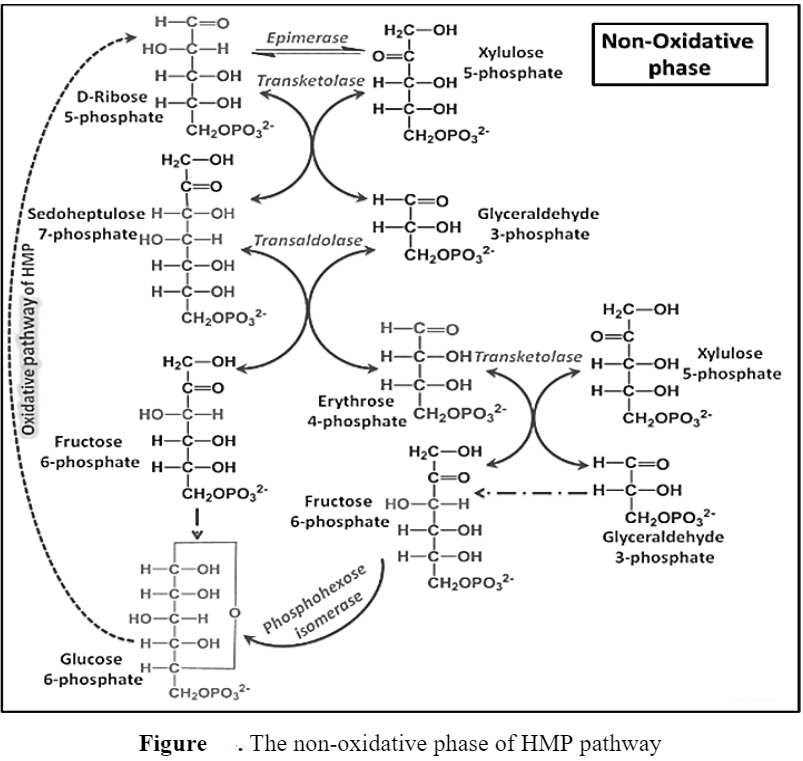Contents:
Introduction
Hexose monophosphate shunt (HMP) or pentose phosphate pathway or phosphogluconate pathway is an alternative pathway to glucose oxidation. The enzymes of the HMP shunt are located in the cytosol and in plastids. Hexose monophosphate shunt has two primary functions:
1) To provide NADPH for reductive biosynthesis
2) To provide ribose -5 — phosphate for nucleotide and nucleic acid biosynthesis
The sequence of the reactions of the HMP shunt is divided into two phases- the oxidative and non-oxidative phases.
Oxidative phase (Irreversible)
- Glucose 6-phosphate dehydrogenase (G6PD) is an NADP-dependent enzyme that converts glucose 6-phosphate to 6 phosphogluconolactone.
- The latter is hydrolyzed by the gluconolactone as to as 6-phosphogluconate. The next reaction involving the synthesis of NADPH is catalyzed by 6- phosphogluconate dehydrogenase to produce 3-keto 6 phosphogluconate which then undergoes decarboxylation to give ribulose 5-phosphate.
- The net result of the oxidative phase is the generation of 2 moles of NADPH, oxidation of one carbon to CO2, and synthesis of 1 mole of pentose phosphate.

Nonoxidative phase
- In the oxidative phase, three molecules of glucose-6-phosphate (G6P) give rise to three molecules of CO2 and three five-carbon sugars.
- These are rearranged to regenerate two molecules of glucose 6- phosphate and one molecule of glyceraldehyde -3-phosphate (G3P) in the non-oxidative phase.
- The non-oxidative reactions are concerned with the interconversion of three, four, five, and seven carbon monosaccharides. Ribulose -5- phosphate (Ru5P) is acted upon by an epimerase to produce xylulose 5 phosphate (Xu5P) while phosphate pentose isomerase converts ribulose 5 phosphate to ribose 5-phosphate (RSP).
- Two enzymes are unique to pentose phosphate pathway act in interconversions of three, four, five, and seven carbon monosaccharides: transketolase and transaldolase. Transketolase and transaldolase catalyze the transfer of 2-C and 3-C molecular fragments respectively.
- In each case from a ketose donor to an aldose acceptor. However, the names of these enzymes should be changed since transketolase(alternative name glycolaldehyde transferase) actually transfers an aldol moiety and transaldolase actually transfers ketol moiety. However traditional enzyme names are used here. Transketolase employs thiamine pyrophosphate as a coenzyme.

Functions of Hexose monophosphate shunt
1) NADPH from HMP shunt serves as a source of electrons for the reduction of molecules during biosynthesis.
2) The pathway synthesizes four and five-carbon sugars for a variety of purposes.
3) Intermediates in the HMP may use to produce ATP.
RELATED ARTICLES:
